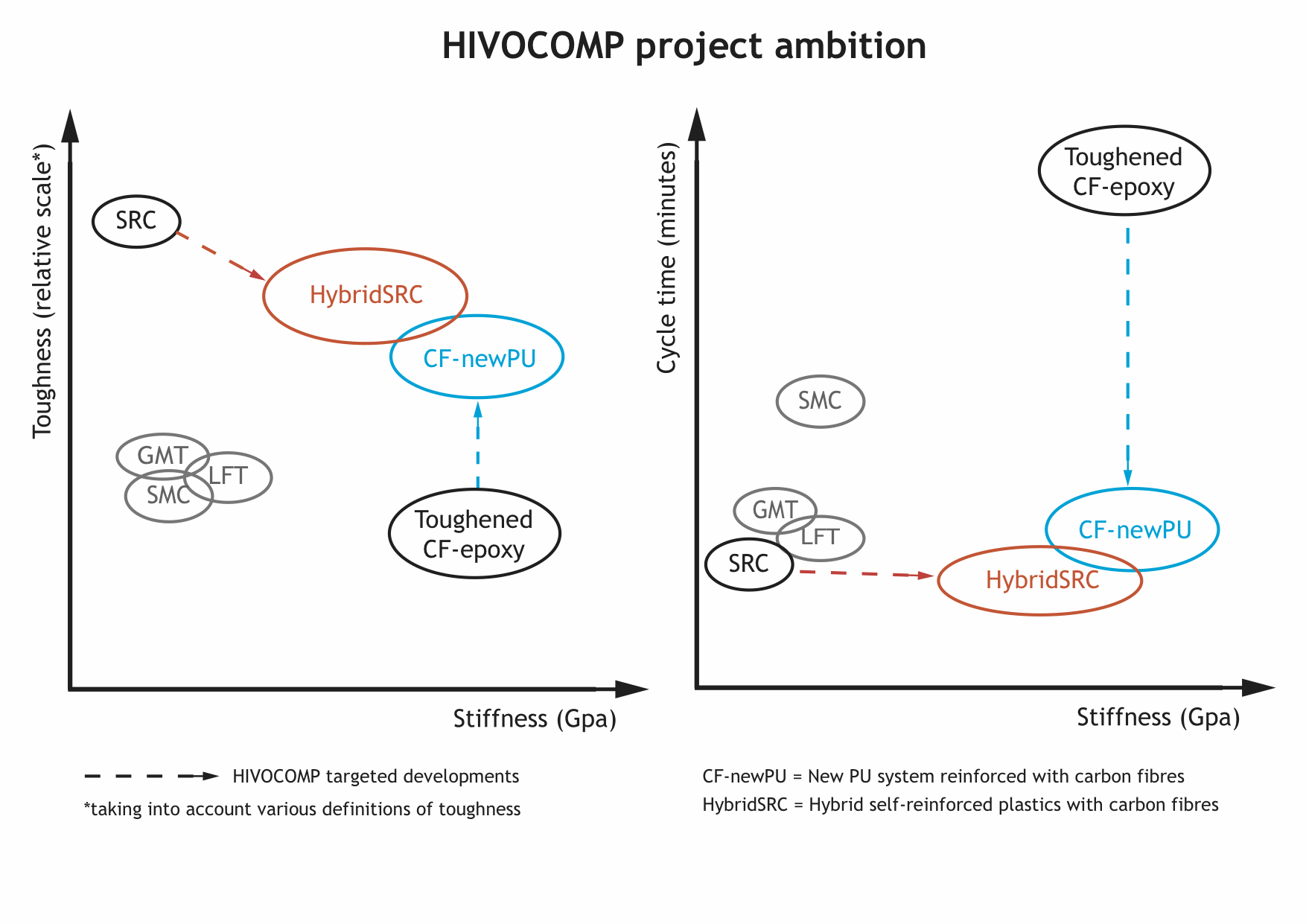About the project
Current applications of carbon fibre reinforced plastics (CFRP) can be found mostly in sectors where their use is not principally not cost-driven and which have limited production volumes, such as aerospace and sports cars.
To achieve a step-change in the application of high-performance composites in larger-volume applications, new materials systems are needed that combine very short production cycle times with performance that meets automotive requirements.
Two materials systems
HIVOCOMP will develop two materials systems that show unique promise for cost effective, higher-volume production of high performance carbon fibre reinforced parts. These are:
- Advanced polyurethane (PU) thermoset matrix materials offering a combination of improved mechanical performance and reduced cycle times in comparison with conventional matrix systems, enabling CFRP to be used in high volume automotive applications, and
- Thermoplastic PP- and PA6-based self-reinforced polymer composites incorporating continuous carbon fibre reinforcements offering increased toughness and reduced cycle times in comparison to current thermoplastic and thermoset solutions.

Demonstrator parts
The performance, production cost and recyclability of new CFRP materials systems will be thoroughly tested and benchmarked to ensure they achieve ambitious cost, safety and environmental targets, and the advances validated through the manufacturing of representative demonstrator parts.
Spin-off applications
The project focuses demonstrating the viability of these materials in passenger cars, but it has identified spin-off applications in other transport-related sectors as well.
The HIVOCOMP project is funded under the topic NMP-2009-2.5-1 “Light high-performance composites” of the European Commission’s 7th Framework Programme for Research and Technological Development (grant agreement n° 246389).